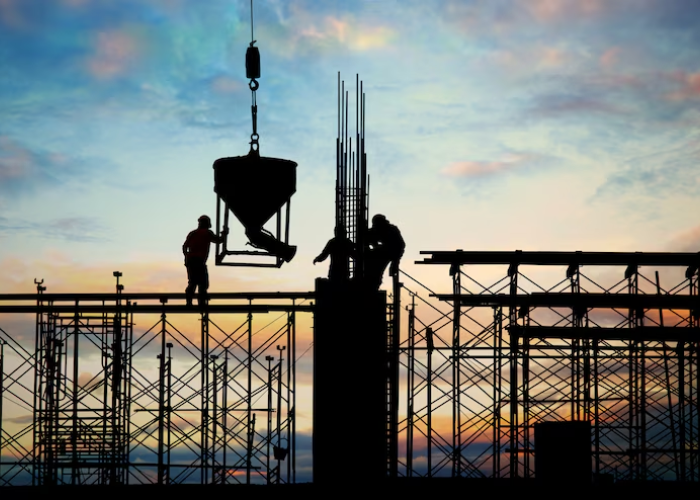A well-designed building construction business card serves as your first impression and often determines whether potential clients will remember your services. In the competitive construction industry, where trust and professionalism are paramount, your business card becomes a powerful marketing tool that can set you apart from competitors and open doors to new opportunities.
Must Read:Irvine Business Complex: Your Complete Guide to Orange County’s Premier
Why Your Building Construction Business Card Matters More Than Ever
The construction industry has evolved significantly, with professionals increasingly recognizing that effective networking and branding are crucial for business success. Your contact info is perhaps the most critical element on your business card, as it enables potential customers to reach out, request quotes, and schedule jobs.
In today’s digital age, you might wonder if business cards are still relevant. The answer is a resounding yes. While digital networking has its place, physical business cards create a tangible connection that digital exchanges often lack. They demonstrate professionalism, attention to detail, and commitment to quality – all essential qualities that construction clients seek.
Essential Elements of an Effective Building Construction Business Card
Contact Information: The Foundation of Your Card
Contact information needs to include some essential things: Name, phone number, email address, website, maybe a social handle. For construction professionals, this information should be prominently displayed and easy to read. Consider including:
- Full name and professional title
- Company name
- Primary phone number
- Email address
- Website URL
- Physical address (if you have a showroom or office)
- Social media handles (LinkedIn, Instagram for project showcases)
Professional Branding Elements
Your building construction business card should reflect your brand identity consistently. Feature your logo, tagline, and brand colors. Your business card should help someone recognize your brand if they see your ad, jobsite signage. This consistency builds brand recognition and professional credibility.
Include your company logo prominently, ensuring it’s high-resolution and clearly visible. If you don’t have a logo, consider investing in professional design services, as this visual element often makes the first impression.
Licensing and Certifications
Construction is a regulated industry, and displaying relevant certifications can build immediate trust. Include:
- Contractor license numbers
- Insurance information
- Professional certifications (LEED, OSHA, etc.)
- Industry associations memberships
Services Overview
While space is limited, briefly mention your core services. This helps potential clients quickly understand your expertise and whether you’re the right fit for their project needs.
Design Trends for Building Construction Business Cards in 2025
The business card design landscape is constantly evolving. Experimental materials like wood and deadstock fabric are leading business card trends in 2025. They both have more longevity, and they’re a great way to wow your potential clients with an unconventional look.
Typography Takes Center Stage
Typography is taking a front-row seat in business card design for 2025. Oversized letterforms, experimental typefaces, and bold typographic compositions create a visual impact that’s impossible to ignore. For construction businesses, this means using bold, clear fonts that convey strength and reliability.
Material Innovation
Construction professionals can leverage unique materials that reflect their expertise. Consider:
- Wood veneer cards for general contractors
- Metal cards for steel construction specialists
- Textured papers that mimic concrete or stone
- Recycled materials for eco-friendly builders
Minimalist Approach
An uncluttered, color-forward business card highlights your logo, provides key information, and is aesthetically pleasing—making it hard to throw away. Focus on essential elements and avoid overwhelming the design with too many graphics or text blocks.
Industry-Specific Design Considerations
Color Psychology in Construction
Choose colors that convey trust, stability, and professionalism. Popular choices include:
- Deep blues (trust and reliability)
- Grays (sophistication and balance)
- Earth tones (stability and connection to materials)
- Orange or yellow accents (energy and visibility)
Visual Elements That Work
Incorporate subtle design elements that reflect your construction expertise:
- Architectural line drawings
- Blueprint-style borders
- Tool silhouettes
- Building skylines
- Geometric patterns reminiscent of construction materials
Networking Strategies: Maximizing Your Business Card Impact
Strategic Distribution
Your building construction business card is only effective if it reaches the right people. Focus on:
- Industry trade shows and conferences
- Local business networking events
- Client meetings and project site visits
- Supplier and vendor interactions
- Community events and sponsorships
Follow-Up Systems
Having a system for following up after exchanging business cards significantly increases conversion rates. Consider:
- Adding new contacts to your CRM system immediately
- Sending personalized follow-up emails within 24-48 hours
- Connecting on professional social media platforms
- Scheduling follow-up calls or meetings
Digital Integration: Bridging Physical and Online Presence
QR Codes and Digital Enhancement
Modern building construction business cards can bridge the physical-digital gap effectively. Consider adding:
- QR codes linking to your portfolio or website
- Links to video testimonials or project showcases
- Digital contact information that can be easily saved
- Social media integration for ongoing engagement
Online Portfolio Integration
Your business card should direct recipients to comprehensive online resources:
- Professional website with project galleries
- Before-and-after project photos
- Client testimonials and reviews
- Detailed service descriptions and pricing information
Cost-Effective Design and Printing Solutions
Budget-Friendly Options
Creating professional building construction business cards doesn’t require a massive budget. Consider:
- Online design platforms with construction-specific templates
- Local print shops for competitive pricing
- Bulk printing for better per-unit costs
- Simple designs that maintain professionalism without expensive finishes
Premium Options for Higher Impact
When budget allows, premium options can significantly enhance your professional image:
- Thick cardstock for durability and premium feel
- Special finishes like embossing or foil stamping
- Unique shapes or die-cuts that stand out
- High-quality photography of your work
Common Mistakes to Avoid
Design Pitfalls
Many construction professionals make critical errors that diminish their business card effectiveness:
- Overcrowding with too much information
- Using low-resolution images or logos
- Choosing fonts that are difficult to read
- Neglecting proper spacing and layout principles
Information Errors
Ensure accuracy in all details:
- Double-check contact information
- Verify license numbers and certifications
- Ensure website URLs are current and functional
- Proofread all text for spelling and grammar errors
Measuring Success: Tracking Your Business Card ROI
Metrics to Monitor
Track the effectiveness of your building construction business card through:
- New client inquiries received after networking events
- Website traffic increases following card distribution
- Social media connections and engagement
- Conversion rates from initial contact to project proposals
Continuous Improvement
Regularly evaluate and update your business card design:
- Gather feedback from clients and colleagues
- Monitor industry trends and competitor approaches
- Update contact information and certifications as needed
- Test different designs and track performance differences
Future-Proofing Your Business Card Strategy
Adapting to Industry Changes
The construction industry continues evolving with new technologies and methodologies. Technologies such as Artificial Intelligence (AI), Building Information Modeling (BIM), Virtual and Augmented Reality (VR/AR), 3D printing, and data analytics are being rapidly adopted. Your business card should reflect your adaptability and forward-thinking approach.
Sustainability Considerations
Three significant trends for 2025 include the increasing popularity of industrial-style construction, the conversion and improvement of existing buildings, and the emergence of smaller, eco-friendly residential units. Consider eco-friendly business card options that align with sustainable construction practices.
Frequently Asked Questions About Building Construction Business Cards
Q1: What information should I include on my building construction business card?
Your building construction business card should include essential contact information (name, phone, email, website), company name and logo, professional title, relevant licenses and certifications, and a brief overview of your core services. Avoid overcrowding by focusing on the most critical information that helps potential clients contact you and understand your expertise.
Q2: How can I make my construction business card stand out from competitors?
To differentiate your building construction business card, consider using unique materials that reflect your expertise (wood veneer, textured papers), incorporate subtle design elements like architectural drawings or blueprint-style borders, and ensure your branding is consistent and professional. Focus on quality over quantity, and consider premium finishes that create a memorable tactile experience.
Q3: Should I include my license number on my business card?
Yes, including your contractor license number on your building construction business card builds immediate credibility and trust with potential clients. It demonstrates that you’re properly licensed and legitimate, which is crucial in the construction industry where licensing requirements are strict and clients need assurance of your professional qualifications.
Q4: What’s the best paper stock for construction business cards?
For construction professionals, choose durable cardstock (at least 14-16pt thickness) that can withstand job site conditions. Consider materials that reflect your work – textured papers for general contractors, smooth premium stocks for architects, or unique materials like wood veneer for specialty builders. The card should feel substantial and professional when handed to potential clients.
Q5: How often should I update my building construction business card design?
Review and potentially update your building construction business card every 2-3 years or when significant changes occur (contact information, services, certifications, or branding). However, if your contact information or licensing status changes, update immediately. Regular updates ensure your card remains current and continues to effectively represent your evolving business.
Conclusion: Building Success One Card at a Time
A well-designed building construction business card is more than just contact information – it’s a powerful marketing tool that can open doors to new opportunities and establish lasting professional relationships. By focusing on essential elements, embracing current design trends, and maintaining professional quality, your business card becomes an extension of your brand that potential clients will remember and value.
Remember that your business card often serves as the first physical representation of your construction business. Invest in quality design and printing, keep information current and accurate, and use strategic distribution to maximize its impact. With thoughtful planning and execution, your building construction business card can become a valuable asset in growing your construction business and establishing your professional reputation in the industry.
Take action today by evaluating your current business card or designing a new one that truly represents your construction expertise and professionalism. Your future clients are waiting to connect with you – make sure your business card makes the right first impression.



